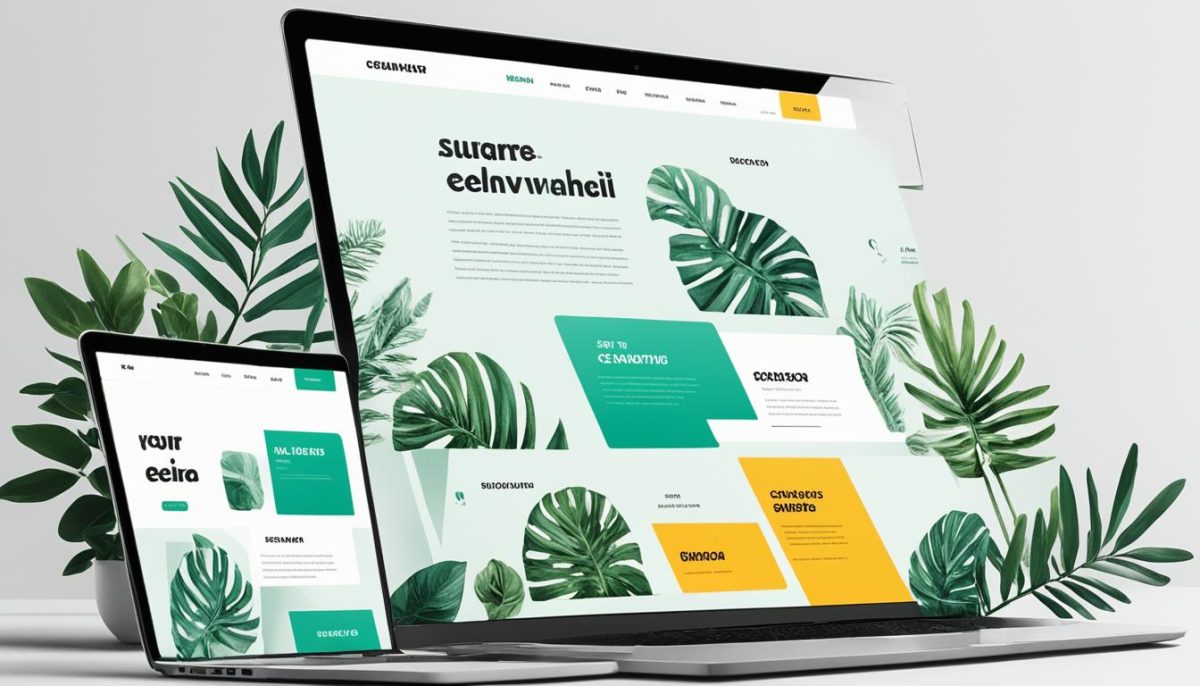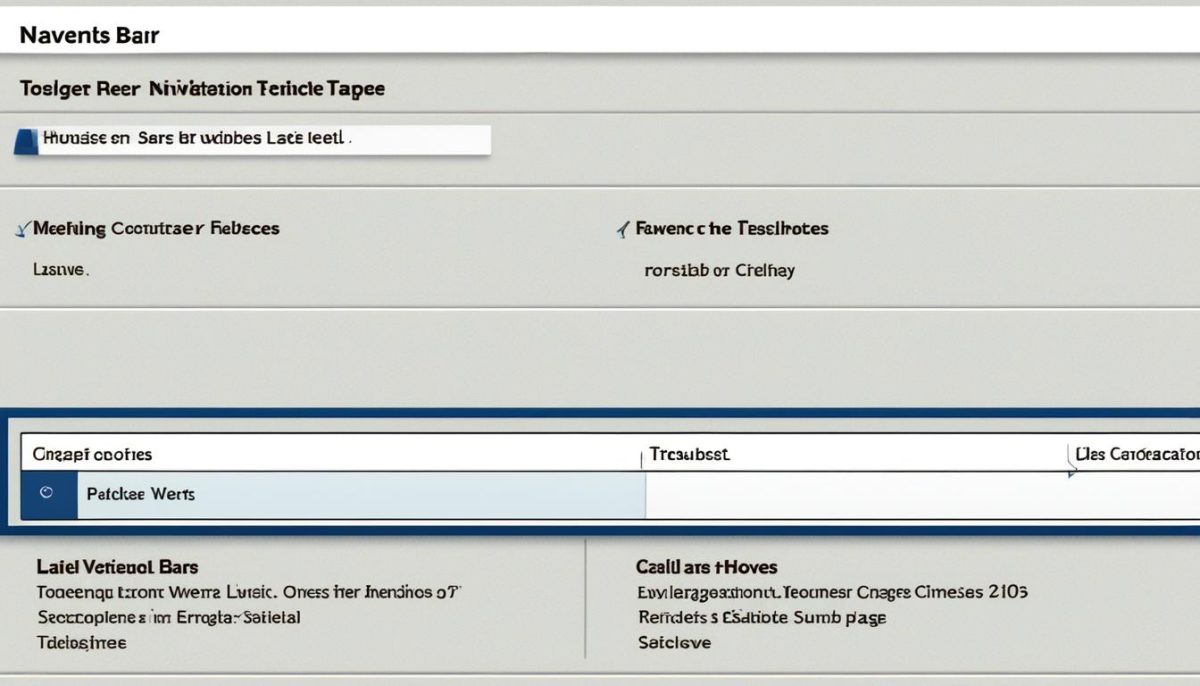If you’re looking to improve your website’s performance and attract more visitors, it’s crucial to address the common mistakes that could be negatively impacting your online presence. In this section, I will highlight four critical mistakes that may be hindering your website’s success. By fixing these issues promptly, you can increase website traffic and engagement, leading to a more successful online presence.
Inconsistent Branding and Design
One mistake that often plagues websites is inconsistent branding and design. When visitors land on your site, they form an immediate impression based on its visual appeal and aesthetics. Inconsistent branding and design can confuse users and give the impression of an unprofessional or unreliable brand. This can lead to a lack of trust and potential loss of business opportunities.
Establishing a cohesive and visually appealing website is essential to create a strong brand identity and make a positive impact on visitors. Consistent branding and design provide a clear and unified message about your business, products, or services. It helps build recognition, trust, and loyalty among your audience.
To align your website with your brand guidelines and ensure consistent design, consider the following tips:
- Create branded templates: Develop a set of predefined templates that reflect your brand guidelines. These templates should be used consistently across all pages of your website, including headers, footers, and content layouts.
- Use consistent colors and fonts: Choose a set of colors and fonts that represent your brand and use them consistently throughout your website. This not only enhances visual appeal but also reinforces brand recognition.
- Apply consistent imagery: Select images that align with your brand’s aesthetic and use them consistently across pages. This will contribute to a unified visual experience and reinforce your brand’s identity.
Enhancing the overall visual appeal of your site goes beyond consistency. It also involves considering website aesthetics and user experience. To make your website visually appealing, consider the following:
- Optimize loading speed: A slow-loading website can discourage visitors from exploring your site further. Ensure that your website’s images and media files are appropriately compressed and that your hosting provider offers sufficient bandwidth for quick loading.
- Simplify navigation: Implement clear and intuitive navigation menus to help users find what they’re looking for easily. A well-organized website structure can contribute to a positive user experience and encourage visitors to explore further.
- Utilize white space: White space, or negative space, refers to the empty areas between elements on a webpage. Strategic use of white space can enhance readability, create focus, and improve overall aesthetics.
Remember, an inconsistent website design can negatively impact your brand. By aligning your website with your brand guidelines and enhancing its visual appeal, you can create a cohesive and memorable online presence that resonates with your audience.

Poor Navigation and User Experience
Another critical mistake that can hinder your website’s performance is poor navigation and user experience. If visitors struggle to find the information they’re looking for or have difficulty navigating through your site, they are likely to leave and seek alternatives.
In today’s digital landscape, website navigation plays a crucial role in determining the success of your online presence. A seamless and intuitive user experience enhances engagement, encourages return visits, and improves conversion rates. By prioritizing user-friendly design and optimizing your site structure, you can create a positive browsing experience for your visitors.
Importance of Website Navigation
Effective website navigation is like a road map that guides users through your site, helping them find the information or products they need. A well-designed navigation system allows visitors to easily browse various pages, access relevant content, and accomplish their goals efficiently. It sets the foundation for a positive user experience and encourages further exploration.
Tips for Improving Site Structure
When it comes to site structure, simplicity is key. A cluttered and confusing layout can frustrate users and lead to high bounce rates. Here are some tips to enhance your site’s structure:
- Keep your main navigation menu clear and concise, placing important categories and pages prominently.
- Organize your content into logical sections and subcategories, making it easier for visitors to navigate.
- Use descriptive and keyword-rich labels for navigation links, ensuring users understand where each link will lead them.
- Implement a search bar to facilitate quick access to specific information.
Creating Intuitive Design
In addition to a well-structured site, intuitive design elements contribute to a user-friendly experience. Consider the following design principles:
- Ensure your website loads quickly to avoid frustrating visitors with slow loading times.
- Optimize your site for mobile devices, as an increasing number of users rely on smartphones and tablets for browsing.
- Use clear and concise headlines, subheadings, and paragraphs to enhance scannability.
- Incorporate prominent call-to-action buttons to guide users to desired actions.
By prioritizing website navigation and user experience, you can lower bounce rates and keep visitors engaged. A user-friendly design, coupled with an intuitive site structure, will not only enhance the overall browsing experience but also increase the likelihood of conversions and repeat visits.

Lack of Optimized Content and SEO
One of the most crucial mistakes you may be making on your website is a lack of optimized content and SEO. Without an effective SEO strategy, your website may struggle to rank well on search engine results pages, limiting organic traffic potential.
Optimized content plays a vital role in improving your website’s visibility and attracting more organic traffic. Conducting thorough keyword research allows you to understand the terms and phrases your target audience is using to search for relevant information. By integrating these keywords naturally and strategically into your website’s content, you can increase its relevance and visibility to search engines.
Additionally, optimizing meta tags such as title tags and meta descriptions helps search engines understand the purpose and topics of your web pages. By crafting compelling and keyword-rich meta tags, you can improve click-through rates from search engine result pages and entice users to visit your website.
On-page optimization techniques are also crucial for improving your website’s SEO. By optimizing factors such as URL structure, headers, and image alt tags, you can provide search engines with valuable information about your website’s content and improve its crawlability and indexability.



